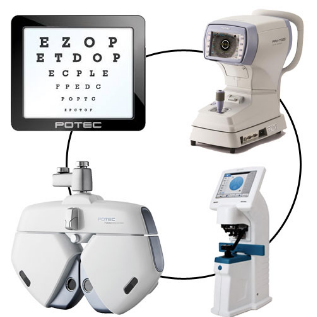
The Patient Protection and Affordable Care Act of 2010 was a driving force behind the nationwide adoption of electronic medical record (EMR) technology, which allows health care providers to quickly and securely share important patient information across a broad digital infrastructure to ensure optimal health outcomes.
And by 2014, practitioners across the United States were required to show proof of their implementation of EMR technology, which means you have likely been using an EMR system in your ophthalmic practice for several years now.
EMR vs. EHR: What's the difference?
EMR and EHR (short for electronic health record) are often used interchangeably, though experts at the Office of the National Coordinator for Health Information Technology (ONC) often point out that EHR is actually a more holistic evolution of the term EMR, which came first.
While the EMR is essentially a digital version of a patient's medical chart, intended to live within your practice, the EHR is meant to be sent and shared with other providers outside of your office. In addition, EHRs cover a broader scope, providing a detailed account of the entire health journey of the patient, beyond just diagnosis and treatment.
EMR/EHR technology in your modern eye care practice
For ophthalmic professionals in particular, EMR systems streamline practice workflows and ensure more coordinated and efficient care. They allow providers to better track and monitor patient information, even notifying them when patients are due for routine eye exams—which are critically important (and here's why).
However, if you are still using outdated manual equipment in your practice, you are actually working against efficiency. The tedious data entry involved with manual devices not only takes time away from patient care but also increases the risk of transcription errors, resulting in a less efficient (and less profitable) practice overall.
The good news? Upgrading your manual equipment to EMR-compatible digital equipment can help overcome these hurdles and provide added benefits in terms of efficiency, patient satisfaction, and profitability.
Why is EMR-compatible digital ophthalmic equipment so important?
Thanks to advancements in EMR technology, sophisticated systems now link directly with digital ophthalmic equipment, including the following devices.

This compatibility allows for data to be uploaded automatically to your EMR system from every digital device in your exam lane—which in turn improves overall accuracy and efficiency and benefits your bottom line.
Key advantages of EMR-compatible digital equipment include the elimination of transcription errors, greater flexibility, improved accuracy, and complete connectivity. Overall, pairing EMR technology with digital equipment in your ophthalmic practice allows for more streamlined exams and greater patient satisfaction.
Build your digital practice with Veatch Ophthalmic Instruments
When you are ready to begin replacing your manual equipment with the latest EMR-integrated digital technology, the experts at Veatch can help you select the right devices to fit your needs and budget. Fill out our online form for a free 15-minute efficiency evaluation, or contact us today by phone or email to learn how to turn your business into a Veatch digital practice.